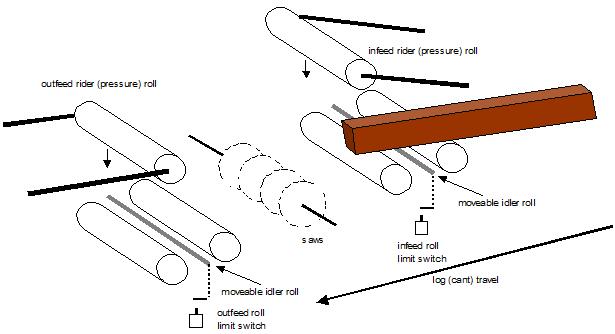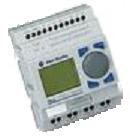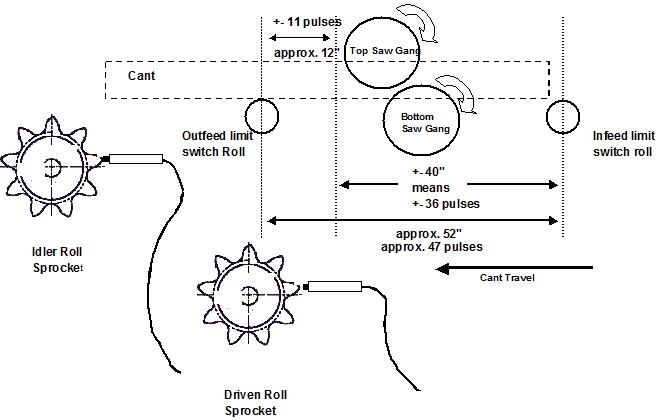| |
|
|
|
|
|
|
| Experimental
PLC Auxiliary Machine Control for a Lumber Saw |
| Problem: Machine operators want to
prevent the out-feed rider roll from slamming down onto the machine, once
the log has passed. The rider rolls, both on the in-feed and out-feed
sections, hold the log down firmly on the feed rolls, while it goes
through the saw blades.
Possible Solution to Consider: Raise the out-feed rider
roll just before the end of the log goes out from under it. BUT not too
soon.
Below is the diagram of the log traveling through the gang of saw
blades. The in-feed rider roll is actuated by a limit switch, when the log
enters the machine. Once the trailing end of the log passes off of the
moveable idler roll (and limit switch) on the in-feed section, the in-feed
pressure (rider) roll is raised by the limit switch. |
 |
| The
log dimensions vary greatly. The critical piece of information is knowing
how fast the log travels through the saw. Knowing when the trailing end of
the log CAME OFF the in-feed limit switch is the best means of planning
for early lifting of the out-feed pressure (rider) roll. Using the
existing machine sprocket teeth that drove the in-feed and out-feed bottom
rolls, an inductive proximity sensor could be used to generate a fixed
pulse rate, that could be counted. |

Existing Machine Sprocket |


Inductive Proximity
Sensor
A-B Pico PLC |
| The
Two Problems with this Approach: The inductive proximity sensor
doesn't turn on instantly, when the target is in front of it. The PICO
control does not instantly register the signal sent to it from the
proximity sensor.
The geometry of the sprocket compounds the problem above. This project
was as much about product development research for a controls manufacturer
as it was improving the machine performance. Even when the rpm, tooth
geometry and tooth count of the sprocket were known, the manufacturer of
the PLC and proximity sensor, could not say for sure, if the PLC would
correctly count the pulses, or even if the sensor would detect every tooth
going by the sensor. |
| |
 |
|
| |
Burhans Research worked with the customer
to determine the actual speeds of the machine and the product traveling
through it. Then, Burhans Research fabricated an experimental control
system to interface with the existing limit switches and relay logic of
the machine. This temporary installation was safe, and allowed the machine
maintenance and operation personnel to observe how the new scheme would
operate the machine and how sensitive it would be to adjustments.
Burhans Research does
manufacturing system simulation research. |
|
| |
return to Burhans Research Home
|
|




